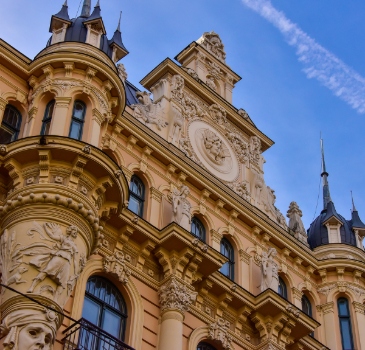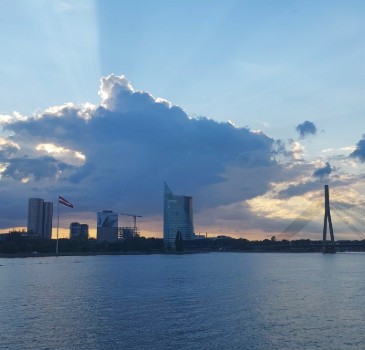Riga is a treasure trove of Art Nouveau, boasting one of the finest collections of this elegant architectural style in Europe. At the turn of the 20th century, the city experienced rapid economic growth, and its wealthy merchants and entrepreneurs commissioned lavish buildings that reflected their prosperity and ambition. Today, Riga’s Art Nouveau district—particularly along Alberta iela (Albert Street)—is a breathtaking open-air museum, lined with ornate façades, whimsical sculptures, and intricate floral motifs. The style here is uniquely eclectic, blending romantic national themes with the flowing lines and organic forms that define Art Nouveau, making Riga a must-visit for architecture enthusiasts.
The genius behind many of Riga’s Art Nouveau masterpieces is Mikhail Eisenstein, a pioneering architect whose work transformed the city’s skyline. His buildings, such as the iconic 10b Alberta iela, are celebrated for their elaborate decorations, asymmetrical designs, and symbolic details inspired by nature and Latvian folklore. Riga’s Art Nouveau isn’t just confined to grand residences—it extends to public buildings, churches, and even doorways, each telling a story of creativity and craftsmanship. Whether you’re strolling through the historic center or admiring the details of a single façade, Riga’s Art Nouveau offers a captivating glimpse into the city’s golden age.
Beyond its beauty, Riga’s Art Nouveau reflects a fascinating cultural fusion. Unlike the more uniform styles found in cities like Paris or Barcelona, Riga’s architecture incorporates local Baltic motifs and a mix of influences from Germany, Scandinavia, and Russia. This blend of styles creates a distinctive aesthetic that feels both universal and uniquely Latvian. For anyone passionate about history, art, or design, exploring Riga’s Art Nouveau is like stepping into a vibrant, artistic time capsule.


